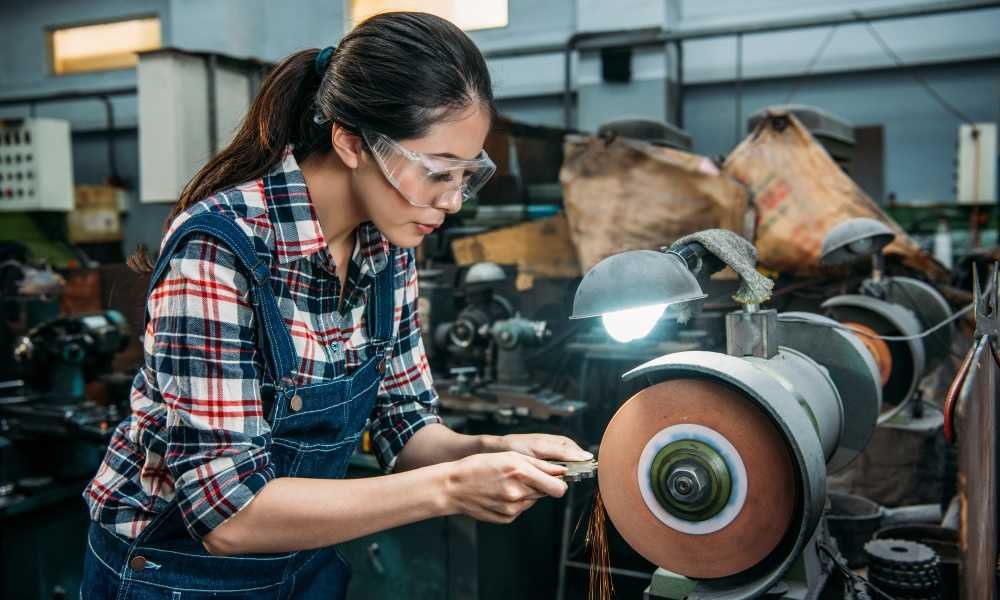Bench grinders are a common sight in many workplaces as they are useful for a variety of tasks including grinding, sharpening, rough shaping, cleaning and polishing. However, just like most tools within a workshop or construction area, they can be dangerous if not used correctly.
In this article we will cover all the safety aspects of using a bench grinder, as well as the dos and don’ts that you should follow to keep yourself and everyone around you safe.
What exactly are bench grinders?
Bench grinders are mounted to a stable table-top location like a workbench and have two grinding stones, one coarse and one fine, that spin rapidly. A workbench grinder can be used to sharpen, shape, clean or sand items in a very quick and easy way.
Why are bench grinders considered dangerous?
There are many hazards to consider when working with a bench grinder. Because grinders operate at such a high speed, there is a whole lot of safety hazards that can cause serious or even fatal injuries such as:
- caught-in hazards that can cause injuries
- wheel explosions that can cause cuts and lacerations
- sparks and heat hazards which can cause burns
- flying particles that can cause impact and eye injuries
- dust that can cause respiratory issues
These are some of the main and very dangerous hazards that could occur if the grinder is not used safely.
What safety precautions do I need to take?
Wear the appropriate PPE
You should always wear approved safety glasses or goggles when using a bench grinder to protect your eyes from any dust or sharp particles. Wearing full-face protection is highly recommended to protect against flying debris and avoid the chance of any laceration or cuts.
Before you start any work, make sure to evaluate the task at hand and the work environment to decide if any additional PPE is required like hearing protection, foot protection, or respiratory protection.
Inspect the grinder for any damage
Before you begin or continue any work on your bench grinder, make sure to fully check the whole machine for any damage or cracks. If you do spot anything unusual, do not turn the grinder on and contact maintenance to see if it can be repaired or if it needs replacing.
In addition to the visual inspection, you should “Ring Test” all wheels before mounting on the bench grinder. This means suspending the grinding wheel from its centre hole, then tapping the side of the wheel with a non-metallic object. If the wheel is intact, this test should produce a bell tone.
Safety Do’s
- Do make sure your bench grinder has an adjustable work rest that is kept adjusted to 1/8 inch or less from the wheel’s grinding face.
- Do allow newly mounted wheels to run at operating speed for one minute before grinding.
- Do check that wheels have blotters on each side.
- Before you plug in the grinder, do manually spin the wheel to make sure it is spinning freely.
- Do make sure the grinder is permanently and securely mounted to a solid surface like a heavy workbench or the floor.
- Do make sure safety shields and guards are in place, adjusted properly and secured before using the grinder.
- Do keep your work area clean and free of anything that could accidentally make contact with the grinding wheel.
- Do review all applicable MSDS (Material Safety Data Sheets) before using this product.
Safety Don’ts
- Don’t exceed the speed marked on the grinding wheel.
- Don’t adjust the work rest or tongue guard/spark arrestor while the grinding wheel is rotating.
- Don’t stand in front of or in line with a grinding wheel whenever a bench grinding machine is started.
- Don’t tighten the mounting nut excessively, just do it enough to prevent wheel slippage.




























































